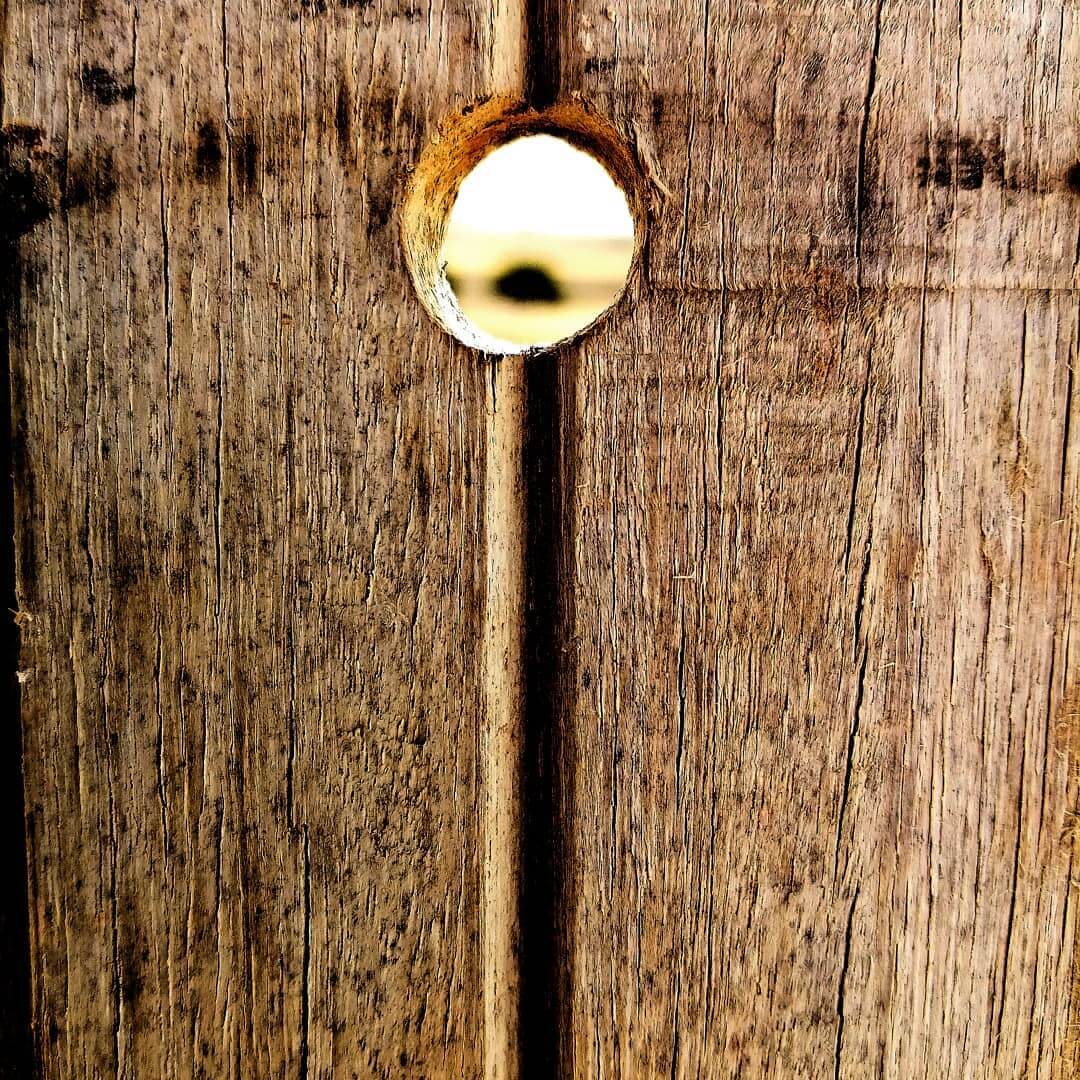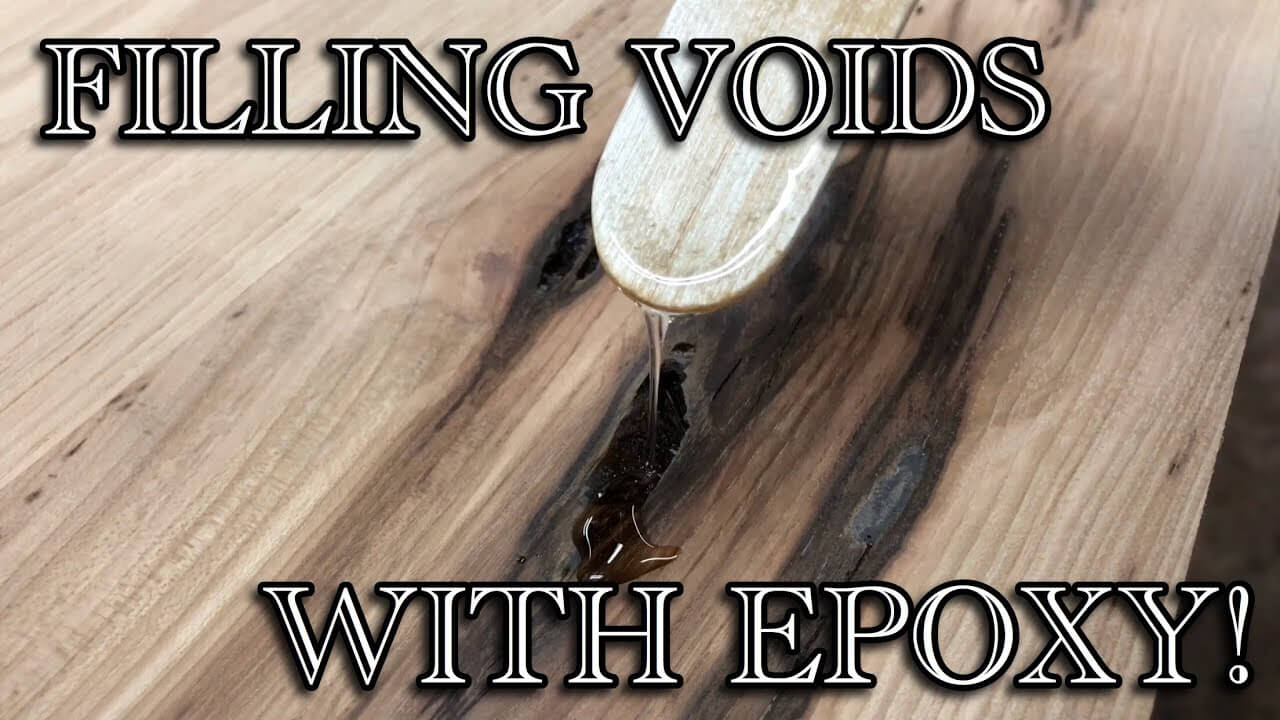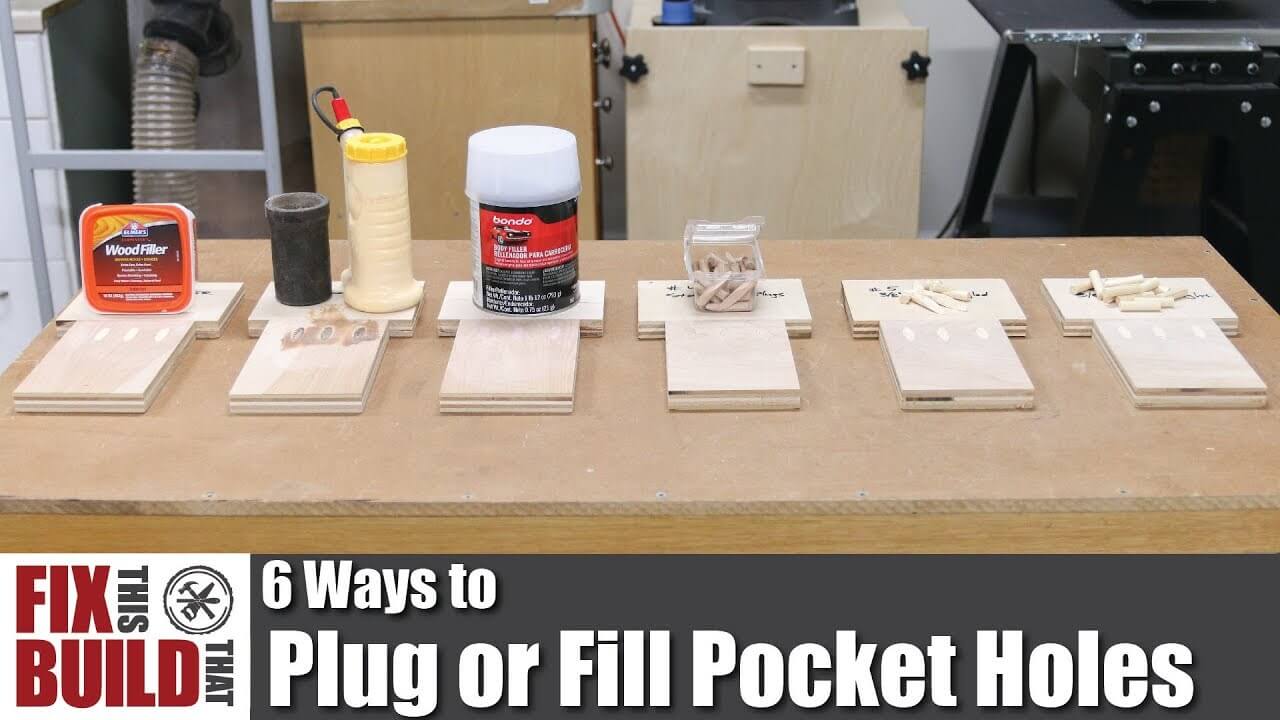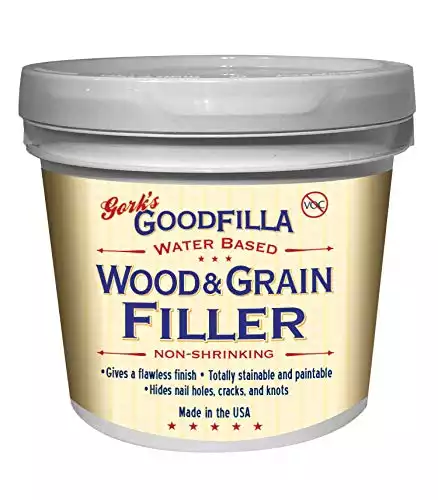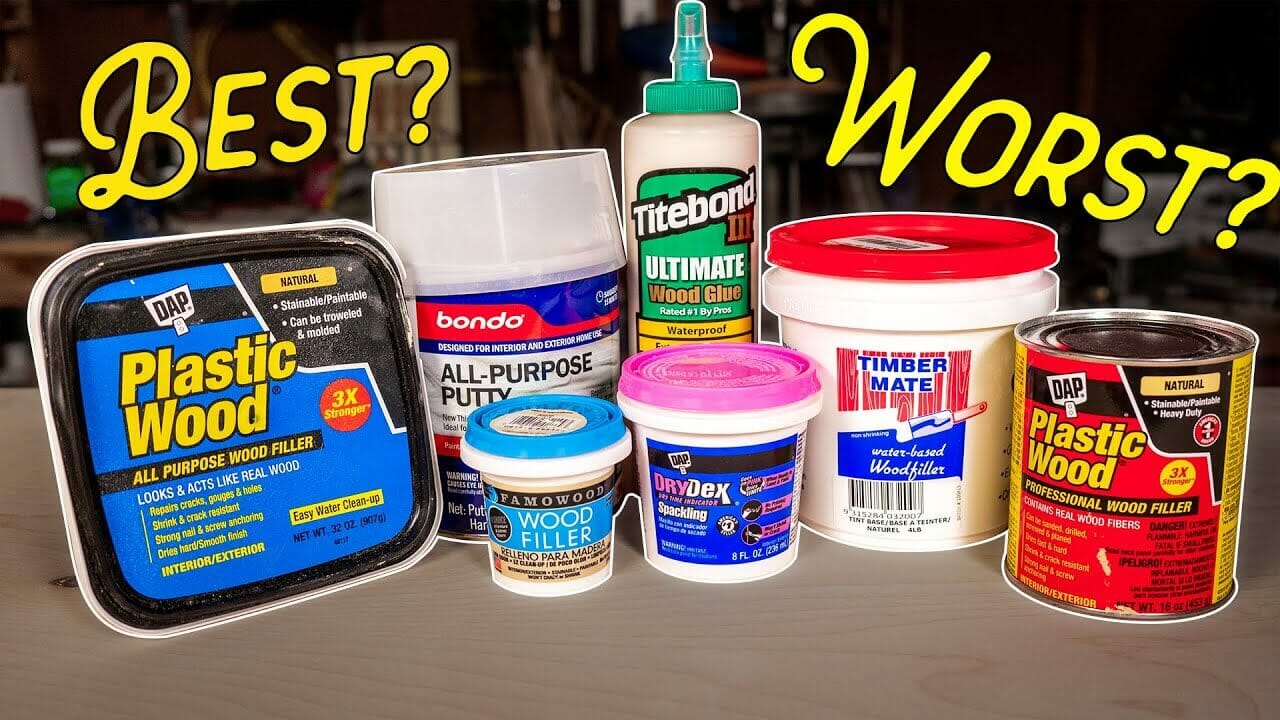How to Fill Large Holes in Wood With Filler
If you have wooden furniture in your home, chances are there’ll come a time when you need to fill in a large hole or crack in the wood. Perhaps someone dropped something heavy on the dining table. Perhaps a knot in your shed’s timber came loose.
Perhaps your kid found a sharp object and a wooden surface and wondered what would happen if they were introduced to each other. Perhaps you are the kid, and you’re here looking for a solution before anyone notices.
It’s best not to dwell on how the hole got there. What we need to focus on is how to fill holes in wood, so let’s get to it.
Different Types of Wood Fillers for Large Holes
The type of filler you use depends on the type of hole you’re treating and what kind of wood you’re working with.
If it’s a very expensive item or an antique you’re trying to repair, it might be best to get in touch with a professional – premium items need premium treatment.
However, the solutions below are appropriate for filling holes in most household items. We’ll cover the advantages and disadvantages of each as we go.
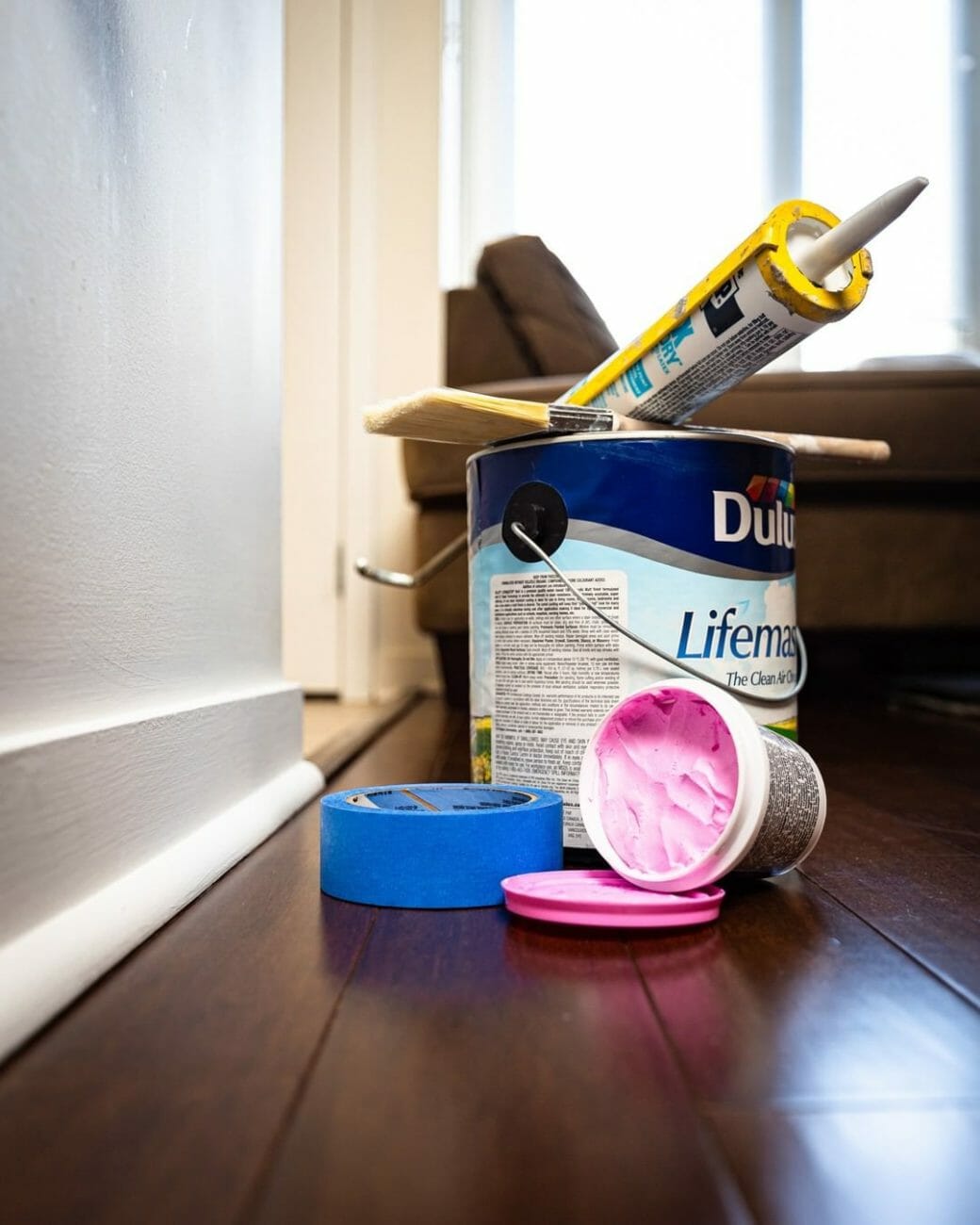
Wood Fillers
Your immediate go-to product is called, well, wood filler. It’s built with one purpose in mind, and it does a pretty good job.
This product is typically made from epoxy or clay – polyurethane fillers are also increasingly popular. Depending on the brand, it may contain natural wood fibers, which can help it blend in with the object you’re repairing.
It’s often quite runny, which means that it’s less appropriate for holes that go all the way through a surface. Another issue with this product is that it’s less appropriate for outdoor use. If you’re treating holes in the wall of your shed, you’re better off looking for a product that is designed to resist the elements.
For interior wood treatments, though, a good-quality wood filler is an affordable and easy-to-use solution. It can be sanded down neatly, and you can even try to find a product that contains fibers from the same wood species as your furniture. It also takes paint and varnish well if you’re considering finishing the surface.
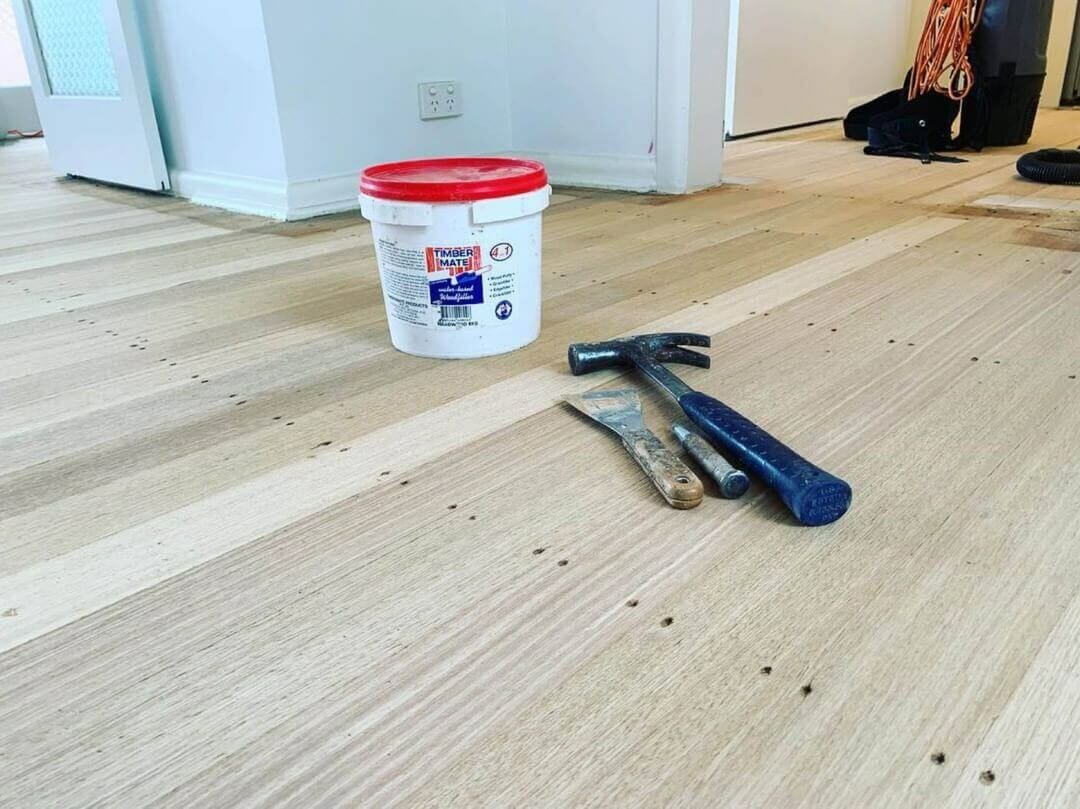
Pros:
- Easy to use
- Affordable
- Widely available
- Quick-drying
- Sands neatly
Cons:
- Unsuitable for outdoor use
- Too runny for holes that go through a surface
- Less adhesive than some alternatives
Epoxy Fillers
Epoxy usually comes in 2 parts. When these are combined, it creates a powerful adhesive substance that becomes hard and durable when it dries.
A major advantage of epoxy fillers is that they’re highly resistant to the elements. This makes epoxy a top choice as an exterior wood filler – deep holes in the side of your shed or decking can be treated effectively with two-part epoxy.
Epoxy is sometimes less useful for filling in holes that run right through a deeper piece of wood because it’s not very fluid. It’s the opposite reason why purpose-made fillers sometimes don’t work, but there is a “goldilocks zone” for holes that penetrate right through a thick piece of wood. It needs to be fluid, but not too fluid.
Of course, this is only true if it’s a deep hole. Larger holes in thin surfaces such as planks can be filled using epoxy it’s a great choice for very large holes because it becomes so hard when it dries. It’s more durable than other fillers.
Epoxy will probably need to be painted, as it looks very synthetic otherwise. This arguably makes it less appropriate for wood with a beautiful, natural finish.
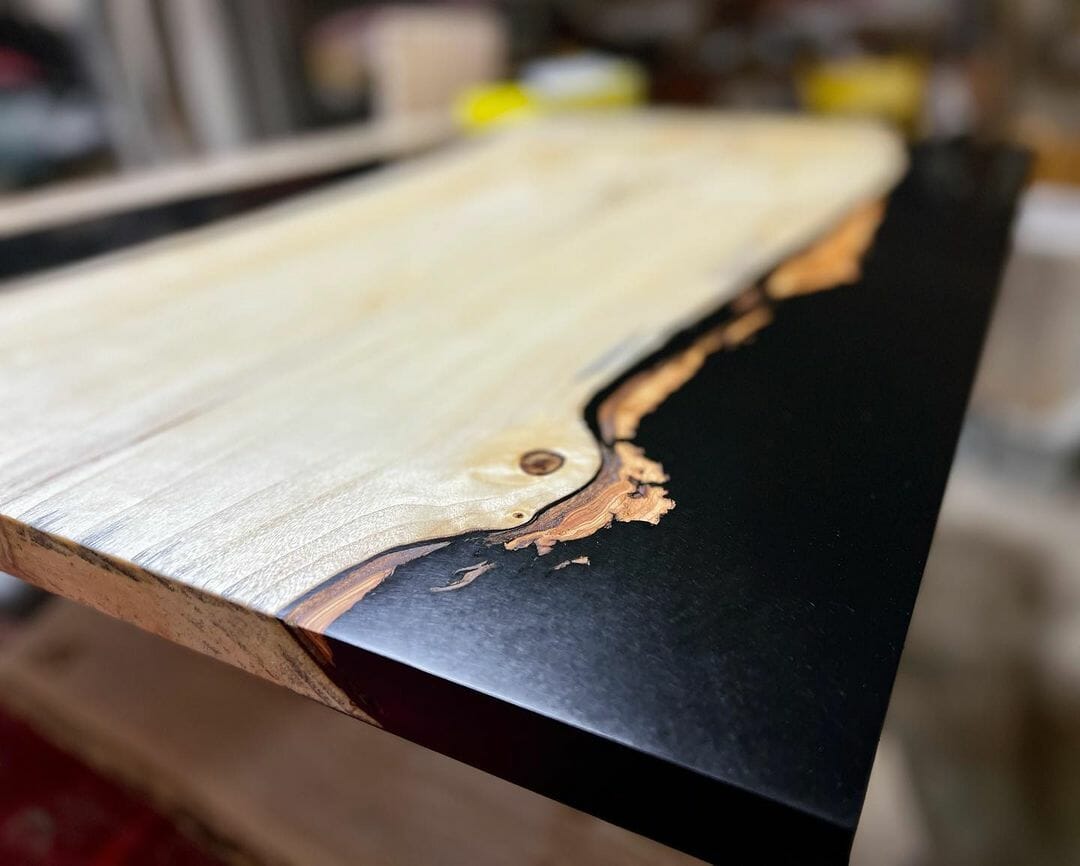
Pros:
- Easy to use
- Becomes very hard
- Weather-resistant
- Good for wide gaps and cracks
- Widely available
Cons:
- Synthetic appearance
- Doesn’t go into deep holes easily
- Sanding is difficult
Spackle
Spackling paste, also known by its trademark name Spackle, is a type of gypsum plaster that works well as a filler for small cracks and gaps. It’s often used in drywalling as well as home woodworking projects, as it can be applied neatly and tends not to shrink, unlike some other fillers.
Spackle contains natural wood, which makes it a great choice if you’re working with a surface that you don’t want to paint. Conversely, it also accepts paint and varnish very well – it’s a great choice for smaller projects.
An issue with using Spackle for deeper holes is that it’s somewhat thick. If the hole is narrow, this makes it more difficult to get full coverage. It’s also less suited for very wide holes that go right through a piece of wood (such as a large gap left by a knot in your shed wall) because it takes a long time to dry. It can become deformed during the wood drying process if it’s not well-supported.
Gypsum plaster composed of glue and hydrated calcium sulfate is also more environmentally friendly than many alternatives.
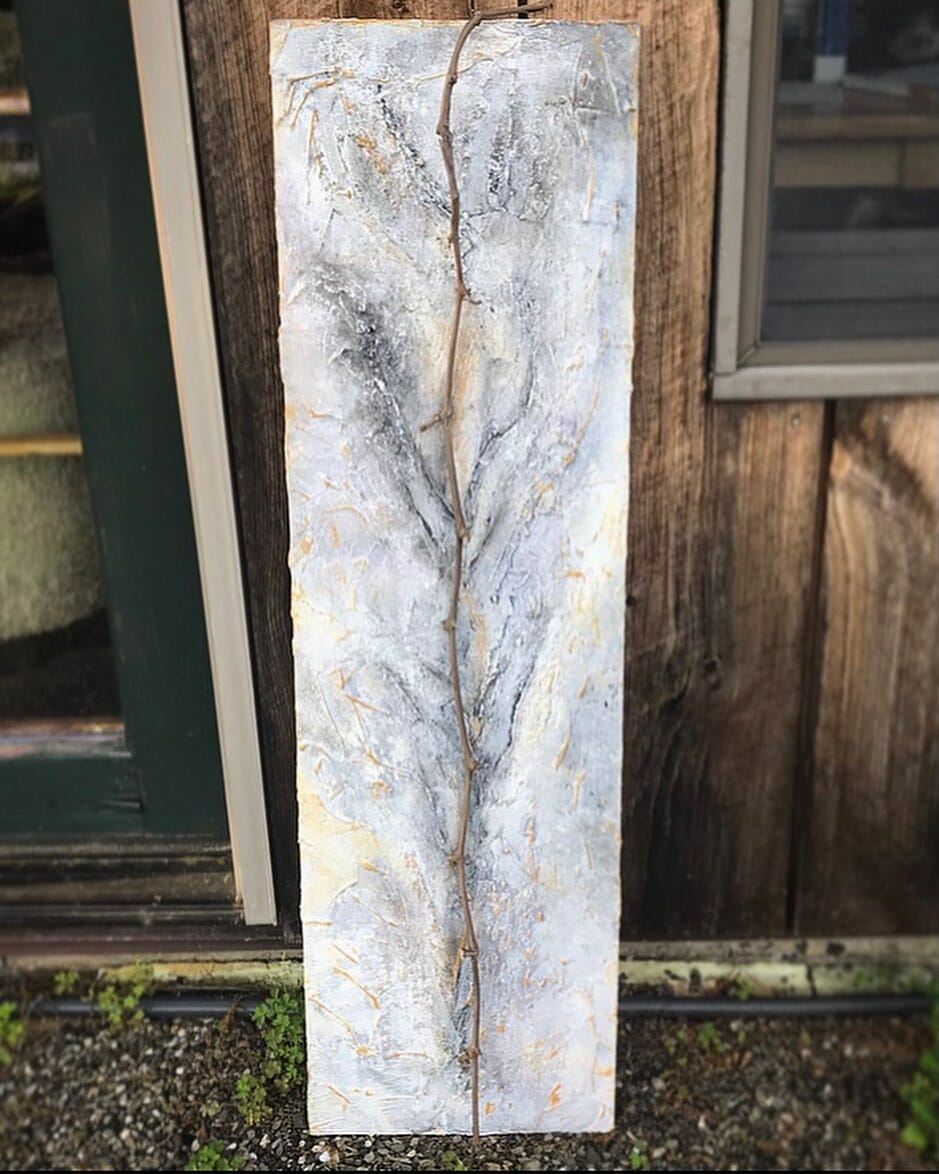
Pros:
- Environmentally friendly
- Good for natural finishes
- Easy to varnish and paint
- Resists shrinkage
- Affordable
Cons:
- Not great for very wide, open holes
- Deep, narrow holes are hard to fill
- Not weather-resistant
Latex Fillers
Latex wood fillers are good for small cracks and gaps. This might include cracks on tables or chairs caused by warping or age, and latex is a great choice if you’re looking for an attractive, smooth finish.
Bear in mind that these products are mostly cosmetic. Latex fillers are a good choice for correcting minor interior wood defects, but can’t be used outside.
They’re also not appropriate for larger gaps or holes as they’re water-based and won’t hold their structure. Latex doesn’t accept paint very well, but this is offset by the fact that latex fillers come in several colors and can be used to finish a whole area of a wooden surface.
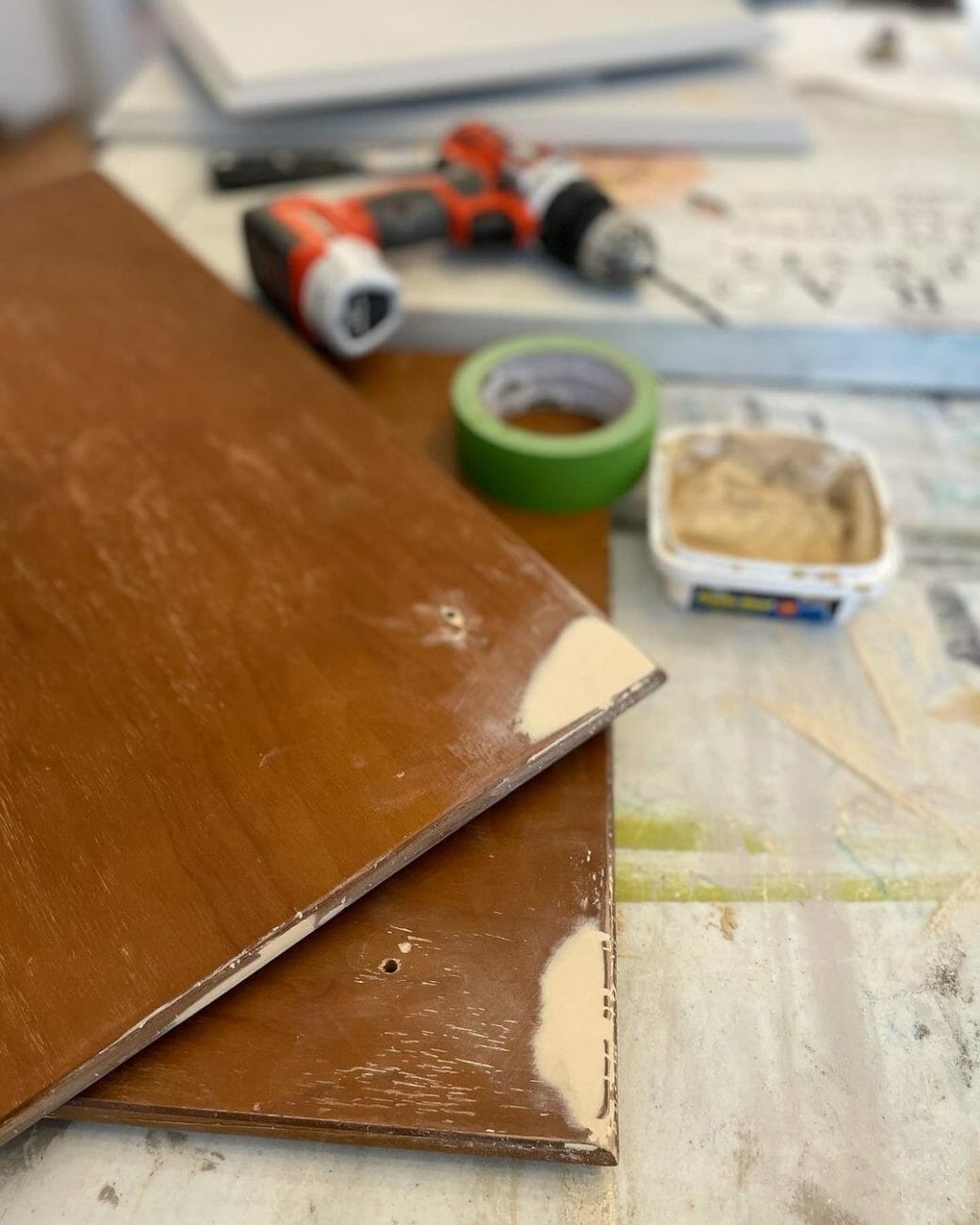
Pros:
- Attractive
- Affordable
- Can be used to refinish old items of furniture
- Good for small cracks
Cons:
- No structural integrity
- May break if used in larger gaps
- Interior use only
Polyester Paste
Another popular option is a polyester paste-like from Minwax which is extremely durable once it’s been allowed to set. It stands up well to the elements, so is appropriate for internal or exterior use. It functions in a similar way to epoxy putty.
A disadvantage of this material is that it needs to be finished using a wood hardener and a type of resin that can be toxic. Many people prefer epoxy resin for this reason, although it can be applied safely as long as you’re wearing gloves and a dust mask when you work.
It’s easy to apply and is suitable for large and medium-sized holes, as it hardens very quickly. It can be sanded safely and even drilled, which makes it a popular choice among DIY woodworkers.
This also makes it a great choice for exterior wood applications, such as holes in your shed wall or decking.
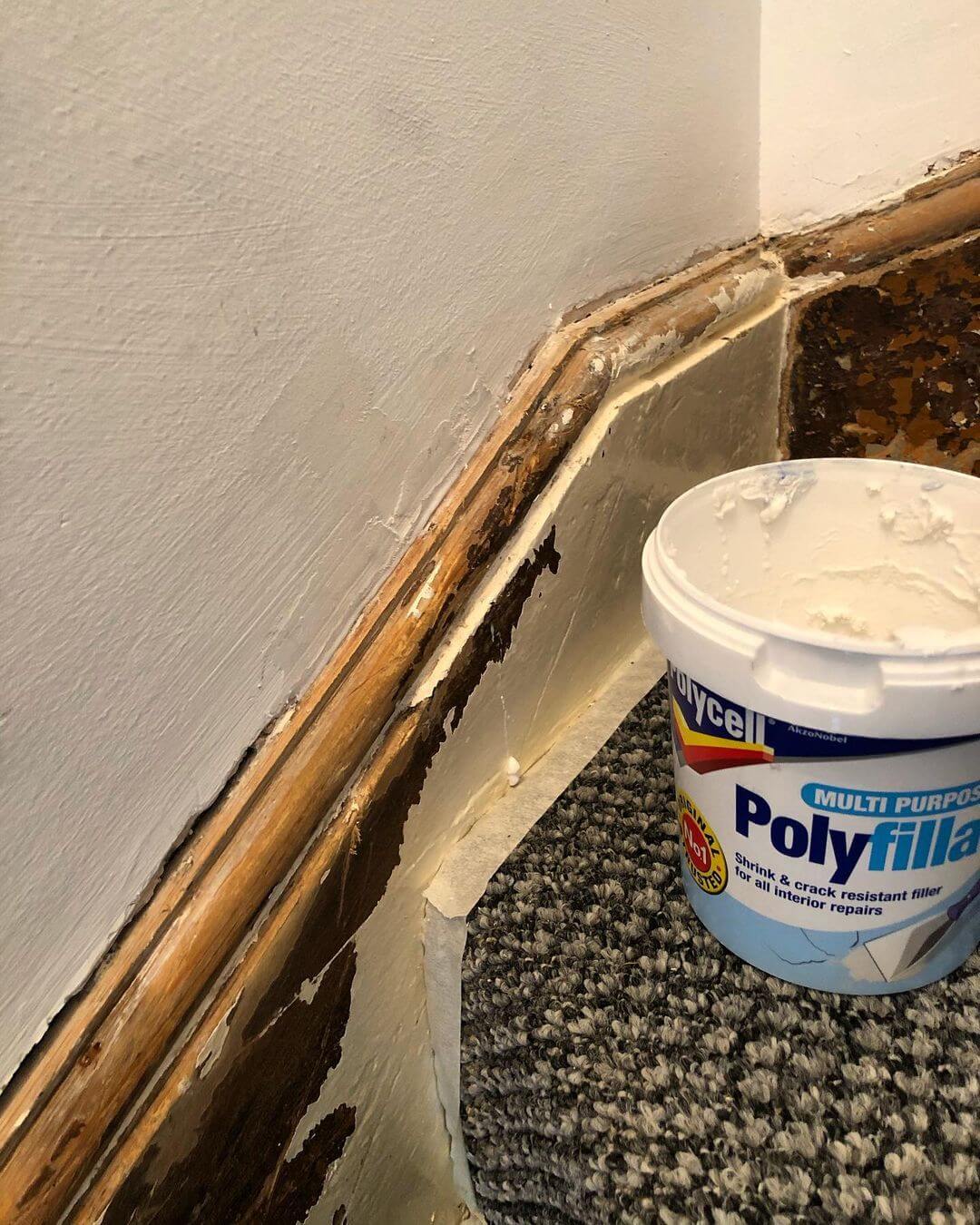
Pros:
- Very strong
- Suitable for indoor or outdoor use
- Hardens quickly
- Can be drilled safely without cracking
- Easy to paint
Cons:
- Resin is toxic – requires safety precautions
- You need to work quickly as it can harden in 15 minutes
Powdered Fillers
Powdered wood fillers are the shop-bought alternative to the traditional method of mixing sawdust and wood glue. So why would you consider paying for a powdered filler?
One reason is that wood glue can be very difficult to dye, and doesn’t always deal well with sanding. This means that it can leave an uneven finish even after painting, or can stand out as an irregular spot if left unpainted. Powdered fillers give you a wider choice of color options and can produce a more natural-looking finish.
Most of these powder fillers work by mixing them with water, after which they harden – some contain agents to speed this process up. Mostly, you’ll have to leave powdered fillers idle for a while before they harden up.
They’re very cost-effective and powder is a great way to treat very large holes and gashes in wood. Say you dropped a car battery on your dining table – that would be an ideal application for a powdered filler.
Powder fillers are best for indoor use, as they don’t stand up well to the elements. They also can’t take drilling or impacts, so make sure not to drop the car battery on the same spot next time – that hole will just get deeper. That said, there’s also Wood Patch from Woodwise if you’re too lazy for all that.
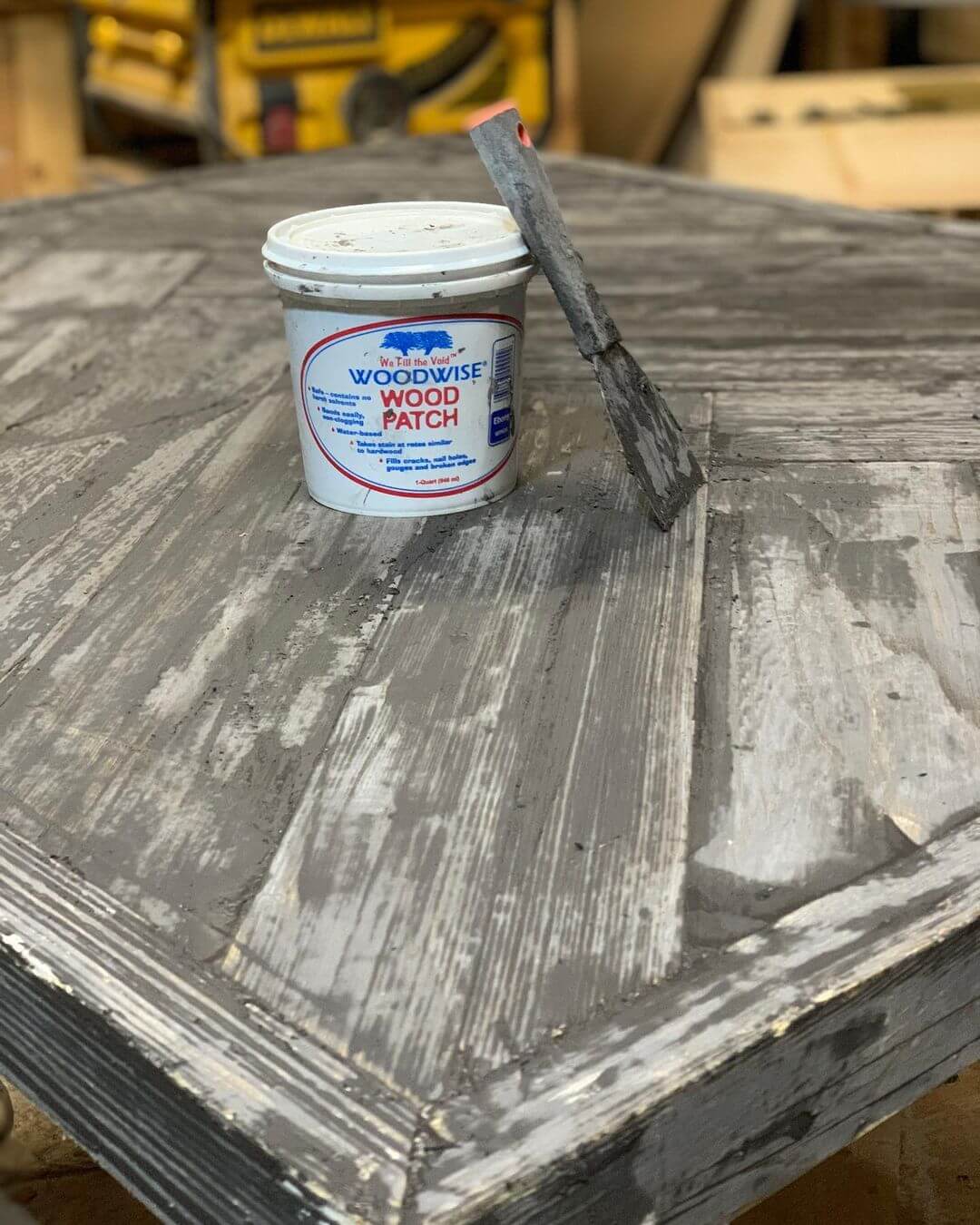
Pros:
- Very affordable
- A broad range of color choices
- Good for wide holes and craters
- Natural-looking finish
Cons:
- Takes a long time to dry
- Not useful for holes that penetrate through the wood
- Not appropriate for outdoor use
- Not impact-resistant
Wood Putty
Wood putty tends to be the best wood filler for holes that pass right through a wooden board or surface, even if the hole is very deep. That’s because it’s less dense than epoxy or Spackle but holds its form much better than regular wood filler.
Cellulose wood putty has a very natural-looking wood tone finish, and can easily be sanded. While it’s very good for deep holes, it struggles with wider gaps, especially if they pass all the way through. This makes it less useful for outdoor applications like holes in your shed wall.
Another important thing to remember when using wood putty is that it should never be applied to raw wood. You’ll need to seal the surface before you apply it, as it can damage wood without protection. This makes it slightly less practical, but the finish is high-quality and it’s a great product for deeper cracks and holes.
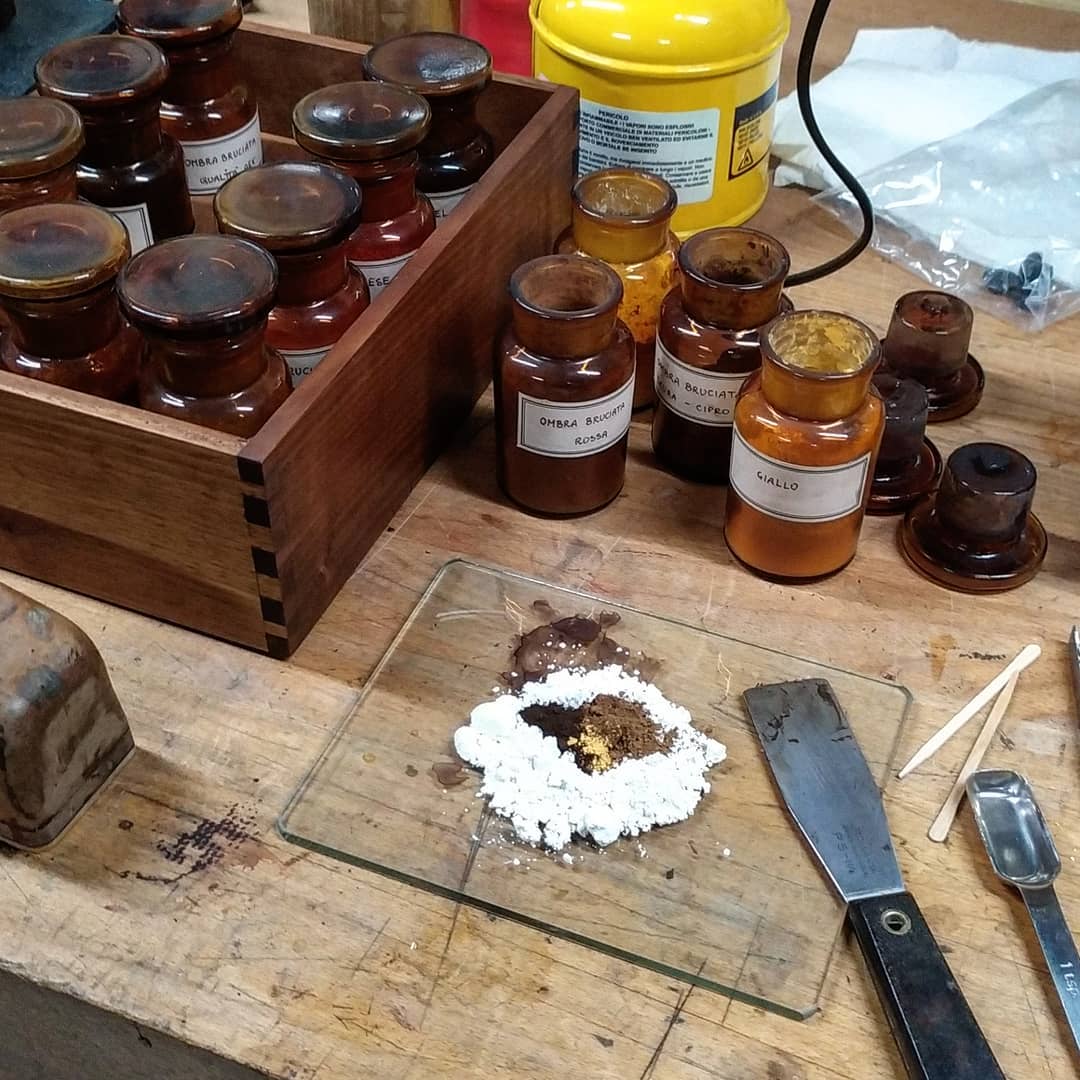
Pros:
- Great for longer holes
- Weatherproof
- Doesn’t shrink and expands naturally with wood
- Attractive finish
- Forms a very tight bond
Cons:
- Somewhat expensive
- Less appropriate for very wide, open holes
- Shouldn’t be used on raw wood
Acrylic Caulk
A popular but expensive silicone filler is acrylic caulk. It’s moisture-resistant and can be applied with a caulking gun, which makes it a favorite for fixing up gaps in the shed or decking. It has an exceptionally natural-looking wood grain finish and is perfectly suited for small holes and cracks.
You need to be precise when applying it, as it doesn’t enjoy being sanded – a caulking gun is not for the trigger-happy. That said, they’re quite fun to use, so it’s a helpful tool if you want to teach your kids how to fix holes in wood.
Acrylic caulking is also pretty expensive. It’s great for woodworkers who will need to fill in small gaps or holes in wood routinely, but if you only have one or two small applications in mind, you may wish to consider a more cost-effective method.
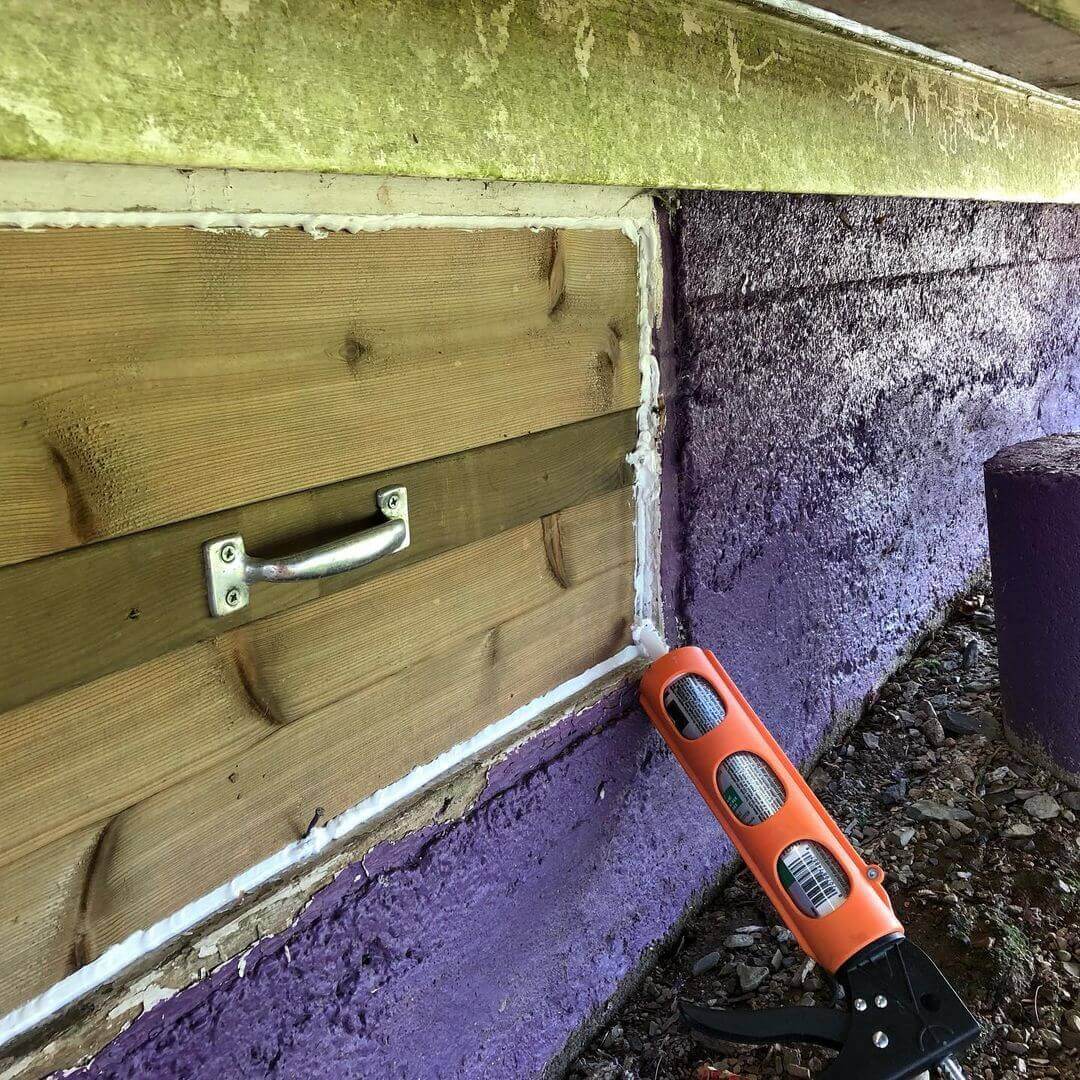
Pros:
- Natural, attractive finish
- Easy to use
- Perfect for outdoor use as it resists moisture
- Good for home woodworkers
- Comes in a variety of colors and styles
Cons:
- Expensive
- Needs careful application
- Doesn’t like being sanded
How to Use Wood Filler for Large Holes and Gaps
Now that you know how to select a wood filler for large holes and cracks, let’s get on with making those repairs.
What You’ll Need:
Note that not all fillers require painting after application, and some dislike being sanded. However, the equipment above is appropriate for most wood fillers.
Step-by-Step Process of Filling Large Holes in Wood
1) Prep and Dry the Surface
First, you need to get the area you’ll be applying the wood filler to nice and smooth. This could mean sanding down uneven parts or removing flakes of paint. You should also ensure there are no loose splinters in or around the hole.
If you need to sand the area, be gentle – just brush away any debris or flaky paint until you’re left with a nice, flat surface. When you’re confident it’s smooth, clean the area with a slightly damp cloth and then dry the wood with a microfiber cloth. Don’t soak the area.
2) Use a Putty Knife to Apply
Use your putty knife to achieve a smooth, even application of the wood filler. If you’re using a product like powder fillers, you can use the putty knife to spread it across the surrounding area to refinish it.
If you’re filling an especially deep or narrow hole, you may need to use a thinner item to push the putty into place. We wouldn’t recommend a screwdriver, as you don’t want hardening putty caking up the head. Depending on how many craft sticks you have lying around, they’re a great alternative.
Remember that if you’re using a product like polyester paste, you’ll need to protect your hands and face while applying it. The resin can be toxic and you shouldn’t touch it.
Once the area has been covered, make sure there aren’t any large bumps. Even if you’re using a wood filler that stands up well to sanding, it’s best to keep it to a minimum.
3) Dry and Lightly Sand
Some wood fillers can be hard and dry in 15 minutes, while others need hours or even days to fully harden. Be sure to check the label on whatever product you’re using before you try sanding it, or you could end up with a messy disaster.
A water-based wood filler will typically take longer to dry than a two-part epoxy filler. Epoxy fillers also tend to sand more effectively.
4) Finishing Touch
If you’re planning to paint over the filler, ensure you wait until it’s completely dry. Nobody likes watching wood filler dry, so good news: you’ll have time to take a trip to your local paint store and pick out the best paint while you’re waiting.
Once you’re sure that it’s dry, assess whether it’s smooth and flat before you apply paint. Once you’re confident and have done any necessary sanding, you’re ready to paint the wood surface and finish the job.
The 5 Best Wood Fillers for Large Holes and Gaps
Not all wood fillers are created equal, of course. To help you choose the best product for the job, we’ve put together a guide to the best wood filler for large holes, including advice on which is the most appropriate for different applications.
1 | Goodfilla Water-Based Wood & Grain Filler
Best for: Home woodworkers
This water-based filler is very affordable and well-designed for home woodworkers and DIY enthusiasts. The paste forms a tight bond with the hole you’re filling, so you don’t need to go to great lengths to prepare the surface before applying Goodfilla.
It’s ideal for filling larger holes but comes into its own as a go-to for amateur carpenters and woodworking enthusiasts. This is because it can easily be reconstituted with water, so you won’t need to worry about potentially wasting extra fillers if you take a break from your hobby. You can come back any time and you won’t need to buy any additional products.
Pros
- Long-lasting and easy to reconstitute
- Powerful adhesive
- Wide range of finishing options
Cons
- Some users report shrinkage
- Should be allowed to dry for several days before exposure to rain
2 | 3M High Strength Large Hole Repair
Best for: Large holes in walls and ceilings
This spackling paste from 3M is an extremely powerful filler that is perfectly designed for repairing substantial holes in walls. It’s reinforced with fibers and claims to work up to 5x faster than conventional vinyl spackling paste.
It’s intended to be used along with this repair plate from 3M, which provides additional support and is appropriate for holes between 3″-5″ in diameter. It holds up well to sanding and resists shrinkage, making it one of the best wood filler options for large dents or cracks in wooden walls, ceilings, and tables.
It requires sealing with exterior paint if used outdoors, but thanks to its quick drying time, it’s easy to paint over before rain arrives.
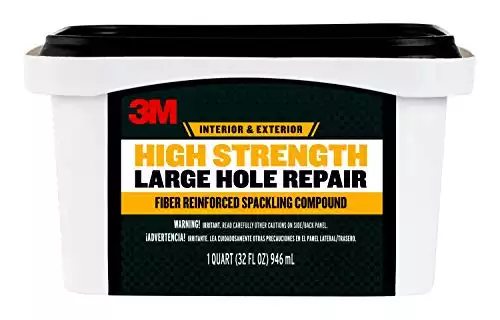 3M High Strength Large Hole Repair Kit (32 oz)
3M High Strength Large Hole Repair Kit (32 oz)
- Repairs holes in lumber 5x faster than traditional vinyl spackling pastes and can be painted over with any type of paint.
- Ideal for repairing larger than average holes (5" plus) in either wood or walls, floors, ceilings and won't shrink, crack or sag in harsher climates.
- Can also be utilized for repairing structural damage from water leaks, nail pops and other odd repairs jobs around the home.
- Optional repair plate for holes bigger than 5" in diameter can be bought separately so you can avoid calling in the professionals.
Pros
- Great for very wide holes
- Quick-drying
- No shrinkage
Cons
- Needs sealing paint for exterior use
- Less useful for deep, narrow holes
3 | Elmer’s P9892 Probond Wood Filler
Best for: Professional-looking wood finishing
Elmer’s Probond Wood Filler is a water-based latex filler that is great for finishing surfaces and treating small cracks and gaps in the wood. Unlike many latex products, it stands up very well to sanding, even resisting the heat of high-speed sanding machines.
This makes it a great choice for professionals needing to refinish wooden surfaces and treat shallow holes. It produces a smooth, attractive finish and is so easy to stain or paint. If you’re looking for the right wood filler for professional-looking results on furniture or wood floors, this could be your choice.
It’s best-designed for frequent use, as it tends to dry up if left for too long – the lid should be kept on when not in use.
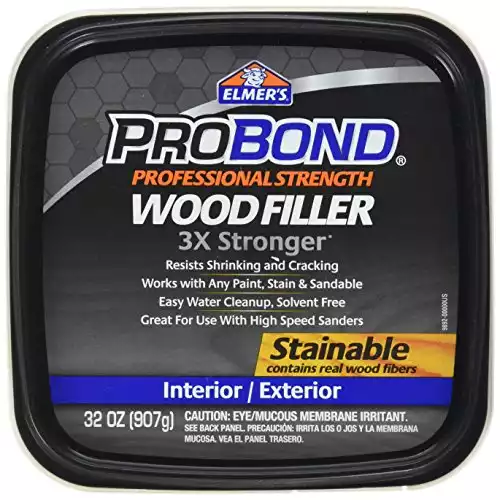 Elmer's P9892 Probond Brown Woodfiller (32 oz)
Elmer's P9892 Probond Brown Woodfiller (32 oz)
- Environmentally-friendly stainable interior/exterior wood filler that caulks, seals and bonds in defective in wood surfaces.
- Incredibly easy to apply and dries quickly, making it ideal for a variety of home improvement projects including trim repair jobs.
- Thanks to its non-toxic, low odor, water-based formula cleans up easily with soapy water and a bit of elbow grease.
- Made with Elmer's exclusive Probond technology for a stronger, more durable bond and can be painted or stained to match any wood surface.
Pros
- Professional finish
- Very easy to sand
- Takes staining and paint well
Cons
- Doesn’t hold up to outdoor conditions well
- Dries up quickly unless sealed properly
4 | FamoWood 40022126 Latex Wood Filler
Best for: All-around indoor applications
This latex wood filler from FamoWood is extremely quick-drying (the company estimates 15 minutes) and is very easy to clean up compared to similar products or wood glue. It claims to hold up well to sanding and drilling, which sets it apart from many budget latex fillers.
It accepts paint and staining like real wood and is a great choice if you’ve got holes in wood trim or other parts of your home that need to look good. It’s solvent-free and doesn’t produce a strong odor, and is appropriate for interior or exterior applications.
It’s arguably less appropriate for filling large holes that penetrate right through a piece of wood, such as holes in the side or ceiling of your shed. However, its quick drying time makes it a great wood filler for large holes that don’t penetrate all the way through.
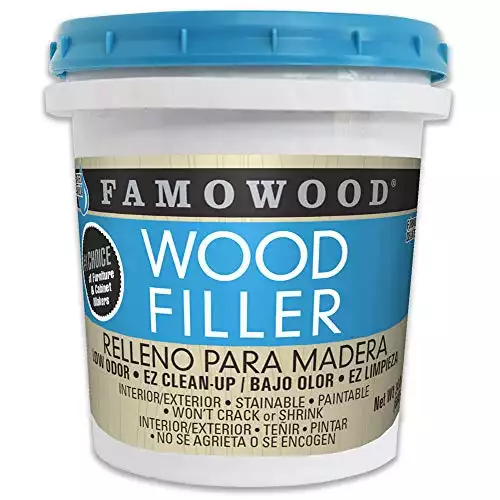 FamoWood 40022126 Natural Wood Filler (32 oz)
FamoWood 40022126 Natural Wood Filler (32 oz)
- Super fast-acting latex based wood filler dries in under 15 minutes and can be applied either on interior/exterior surfaces.
- Solvent free, professional quality wood filler that provides a durable, long lasting repair on any wood surface.
- Ideal for repairing cracks, holes, dents and scratches on wood surfaces such as furniture, doors, trim and crown molding.
- Easy to sand smooth once dry and can be stained or painted to match the surrounding area for near perfect patch-work.
Pros
- Quick-drying
- Stands up well to sanding and drilling
- Solvent-free and mostly odorless
Cons
- May crack if left to dry in the sun
- Less appropriate for deeper penetrations and holes
5 | DAP Inc. 18741 Platinum Patch Filler
Best for: Exterior applications
The DAP Inc. Platinum patch filler is among the most weather-resistant products on the market. It stands up incredibly well to the elements and is more affordable than many two-part epoxy solutions.
In addition to being one of the best exterior wood filler options, its weather-resistant nature makes it a popular choice for filling all types of materials including brick, vinyl, and metal car bodies.
It needs to be primed before painting, which slightly offsets its low price tag as you’ll need to pay for primer. You may also need to wait a bit longer until it’s completely dry than epoxy or alternatives of similar hardness.
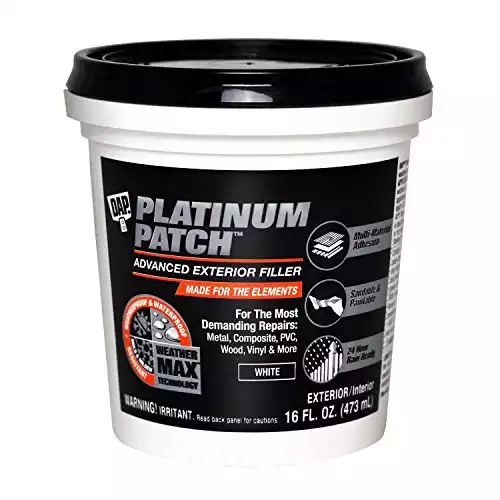 DAP INC 18741 Platinum White Patch Filler (16 oz)
DAP INC 18741 Platinum White Patch Filler (16 oz)
- Provides superb weatherproof protection to assist with preventing discoloration, cracking and crumbling or swelling on exterior foundations.
- Ultra strong multi-material adhesion to tough porous and non-porous materials making it ideal for exterior applications.
- Antimicrobial compound that protects against mold, mildew and algae making it perfect for areas with constant moisture exposure.
- Ideal for repairing fiber cement siding, PVC trim, vinyl siding, metal, composite, concrete, brick, wood and more.
Pros
- Very weather-resistant
- Forms a very tight bond
- Easy to apply
Cons
- Can take a while to dry
- Needs primer before painting
How to Fill Large Holes in Wood FAQ
Can I Use Wood Filler Instead of Spackle?
Yes – Spackle is excellent for treating surfaces that you don’t want to paint, as it has an attractive, wood-like appearance once it sets. However, many of the best wood fillers also have an appealing, grainy texture once they’ve been allowed to dry.
A spackling paste is usually preferable if you’re dealing with a hole on a vertical structure. This is because of its quicker drying time and because it’s fairly thick, it’s less likely to run. You can also sand spackling paste more easily than many wood fillers.
How Big of a Hole Can Wood Filler Fill?
This depends on the type of wood fill you’re using. Water-based fillers can typically treat much larger areas than epoxy fillers or spackling pastes.
Deeper holes are best treated with fluid fillers, although you should find a product that is easy to sand. This is because fluid fillers tend to spill out of the sides, and you don’t want to be left with ugly lumps once they dry.
If a big hole is on a vertical structure like a shed wall, you might want to use extra wood as well as epoxy putty to fill it. Quick-drying agents are best for these applications.
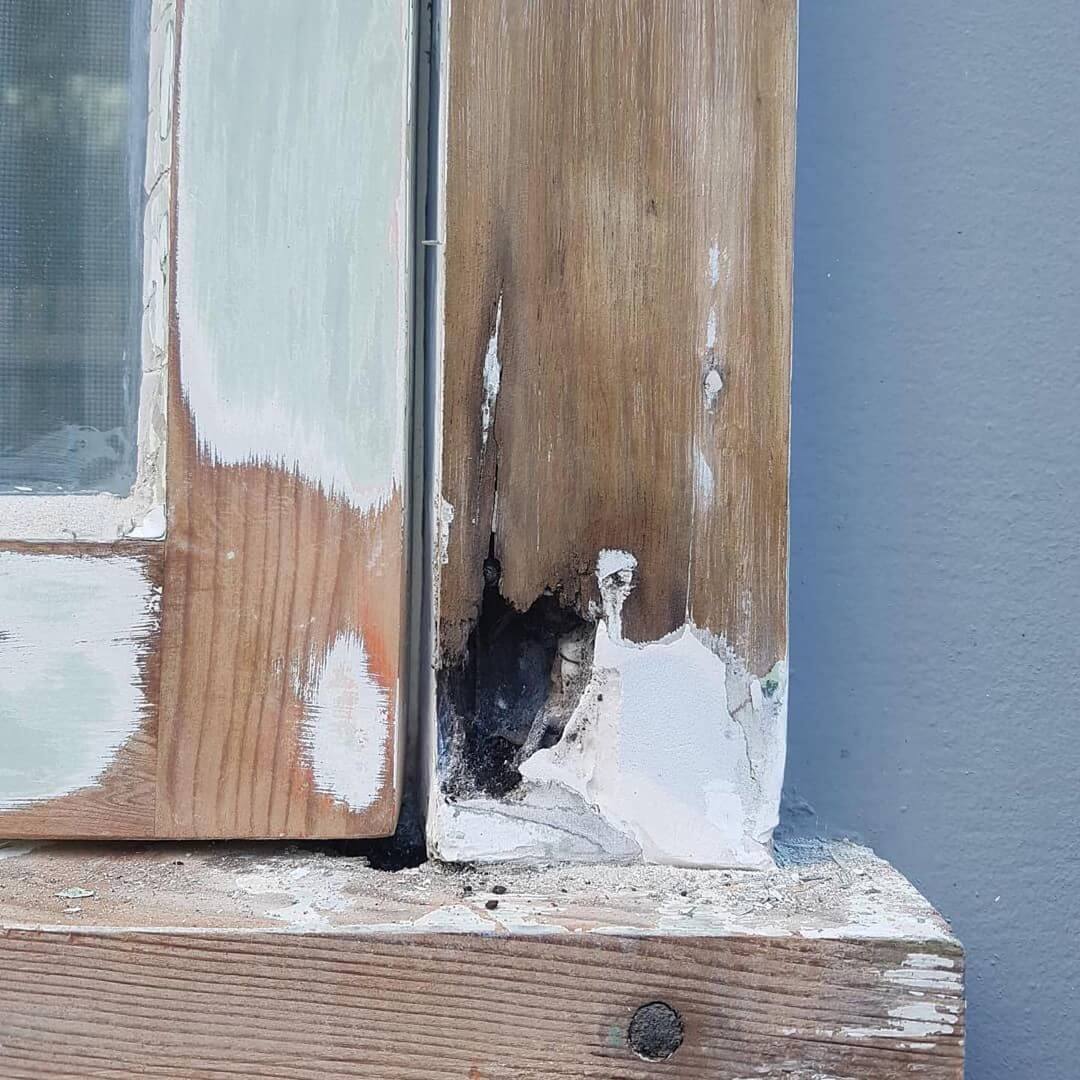
Is Wood Filler Waterproof?
This depends on the product. There’s no hard-and-fast rule, but typically the more waterproof options include:
Acrylic caulking is especially moisture-resistant, and so is often preferred for outdoor applications that will be exposed to rain. Check the label on your product before you try using it outside.
Some products aren’t waterproof but can still be used outdoors when treated with a layer of exterior paint.
Is White Wood Glue and Wood Filler Paintable?
You can paint over the classic homemade filler of wood glue or white glue and sawdust filler. However, it’s more difficult to sand than many purpose-made wood filler products. PVA glue especially doesn’t sand well, as it remains somewhat viscous even when it dries.
Homemade fillers using wood shavings and wood glue are often touted as being more affordable. However, many wood fillers are very cheap and tend to do a better job. If you’re already planning to buy paint (which is often quite expensive), you may as well do the whole job properly.
Should Wood Filler Be Primed Before Painting?
Some products need to be primed before you apply paint. Check the label when you’re buying wood fillers, but you can also look up reviews of the product to find out if other users needed to apply primer.
If in doubt, it’s probably worth priming. You’ll rarely damage a filler once it’s fully dried by applying primer, whereas you might damage it by painting straight onto it.
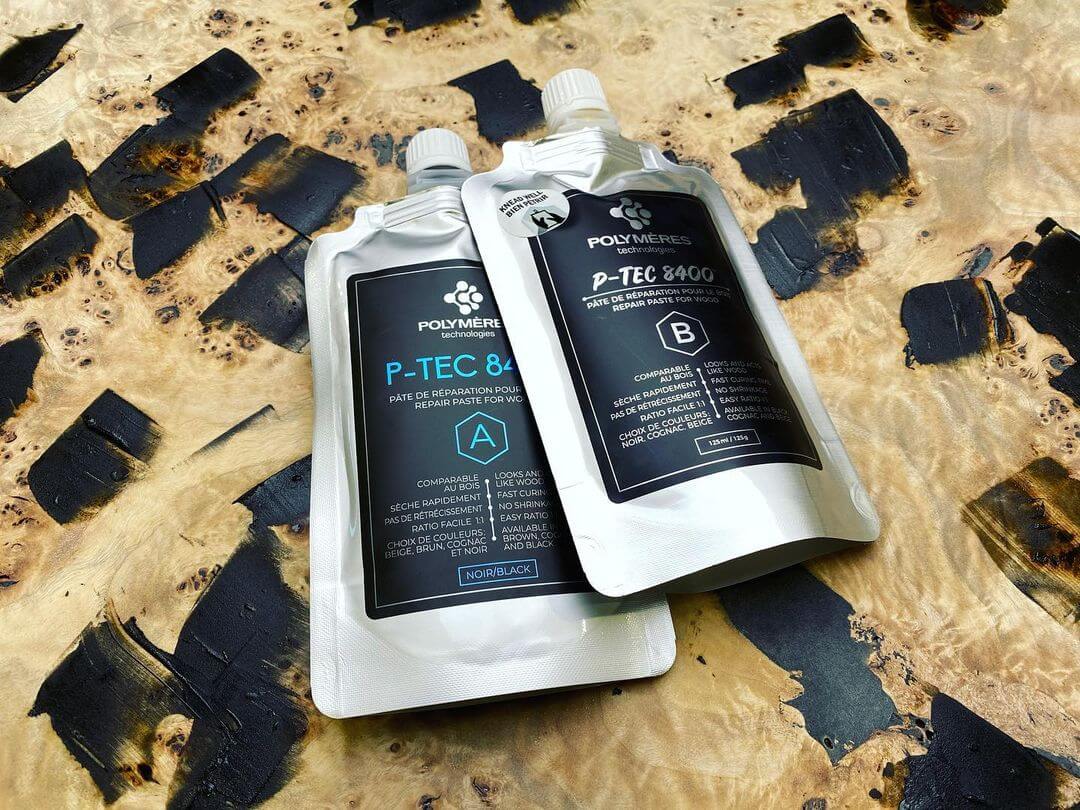
Can You Drill Into Wood Filler?
Some products can be drilled. Epoxy, polyester paste, and spackling paste can be drilled without causing damage.
Most latex and water-based fillers will crack if you try drilling them. Some latex fillers are advertised as drill-friendly, so check the description before making a purchase.
You can always apply a layer of filler to a disposable paper plate and try drilling to see if it cracks, or use a spare piece of wood to test it.
When to Use Wood Filler vs Caulk?
Acrylic caulk is a great product for outside applications. This is because it doesn’t take on moisture and is one of the most weather-resistant types of filler.
Other fillers might be more appropriate if you’re trying to get a precise finish on a piece of indoor furniture. This is because like many homemade wood fillers, caulk doesn’t enjoy being sanded, and you won’t get that nice finish.

Wood Filler vs Wood Putty vs Wood Glue
- Purpose-made wood filler is usually water-based and is good for wide holes and around-the-house applications.
- Wood putty is better for holes that run right through a piece of wood. This is because it’s denser and less prone to leaking out of the ends. It also tends to dry faster.
- Wood glue can be mixed with sawdust and wood shavings to produce a rudimentary filling material. However, this doesn’t stand up well outside and is harder to smooth down.
How Do You Close a Large Hole in Wood?
For gaps and cracks, epoxy, spackling paste, and putty tend to be the best materials. They can be pushed into the cracks using craft sticks and dry quickly, allowing you to paint over them for a realistic finish.
What to Fill Large Holes With?
Check out the options listed at the top of this page – it depends on what type of hole you’re working with.
How Thick Can You Put Wood Filler?
If you’re wondering how much wood filler you need to apply, the answer is: usually less than you’d think. It’s generally better to use too little than too much.
Too much white glue in a homemade filler will create a bumpy, messy surface that can’t be sanded properly. Too much epoxy will require heavy sanding. You can always add more.
The Bottom Line
When you’re filling holes in wood, select your products carefully based on your needs. Most are very easy to use, and you don’t need to purchase loads of additional equipment.
If you’re worried about damaging a high-value item, there’s never any shame in calling the professionals to fix it for you. However, for jobs around the house, you’re now well-equipped to fill in the gaps!

